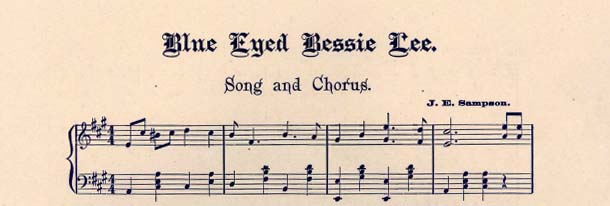
Historic Sheet Music Collection
Document Type
Score
Publication Date
1844
Lyrics
I do remember when a child
before life's griefs began
That near my village home
there dwelt a poor and lone old man
Alone he seem'd best pleased to dwell
alone content to rove
He sued from none their pity
and he sought from none their love
There was something in his manner
and his wild and earnest gaze
That made me think the lone old man
had once seen better day
But none could learn from him the cause
why he would wander so
And they call'd his silence madness
though I thought it might be woe
There came a day, a winter's day
he stood before the gate
of one who had the good's of earth
and lived in princely state
The fire was bright ,that hall within
and wistfully he gazed
as if he thought upon his home
where no such blessings blazed
But they the crowd of heartless boys
who saw him helpless stand
came on with shouts and waving hats
a tyrant little band
Till bent with torture age and woe
the broken spirit bow'd
and he sank upon the rich man's steps
and feebly wept aloud.
One sad day those feeble limbs were missing from the green
That wither'd form no longer in the low church porch was seen
But the village bell was tolling the slow sad knell of death
For the weary and worn hearted who had yielded up his breath
I gazed with trembling round me through the consecrated ground
And my eyes were riveted upon a fresh and nameless mound
Peacefully the lone man beneath its covering slept
And I glanced upon the sunny sky and hid my face and wept!
Recommended Citation
Maeder, James Gaspard, "Lone Old Man" (1844). Historic Sheet Music Collection. 420.
https://digitalcommons.conncoll.edu/sheetmusic/420
The views expressed in this paper are solely those of the author.
Comments
The Lone Old Man,
Ballad sung with great applause by Miss Elizabeth Sloman
Written by the Honble. Mrs. Norton
Mmusic composed by James G. Maeder
Boston. Published by Wm. H Oakes & for sale by E. H. Wade, 197 Washington St.
Some of the resources may contain offensive language or negative stereotypes. Such materials should be seen in the context of the time period and as a reflection of attitudes of the time. The items are part of the historical record, and do not represent the views of the libraries or the institution.